![]()
![]()
THE INDO-EUROPEAN SUPER-FAMILY OF LANGUAGES
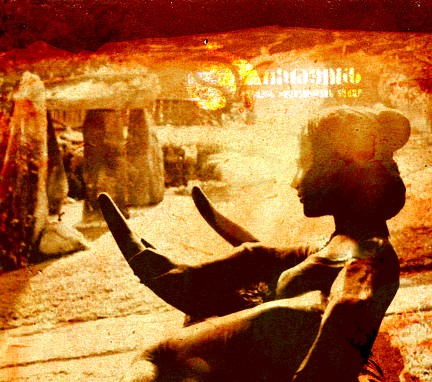
by Thomas V. Gamkrelidze and V. V. Ivanov
Scientific American, March 1990, P.110
Linguistics, the scientific study of language, can reach more deeply into the human past than the most ancient written records. It compares related languages to reconstruct their immediate progenitors and eventually their ultimate ancestor, or protolanguage. The protolanguage in turn illuminates the lives of its speakers and locates them in time and place.

A CEREMONIAL STATUETTE FROM ARTIK‛.
SECOND MILLENNIUM BC.
The science developed from the study of the Indo-European superfamily of languages, by far the largest in number of languages and number of speakers. Nearly half of the world's population speaks an Indo-European language as a first language; six of the 10 languages in which Scientific American appears—English, French, German, Italian, Russian and Spanish—belong to this superfamily.
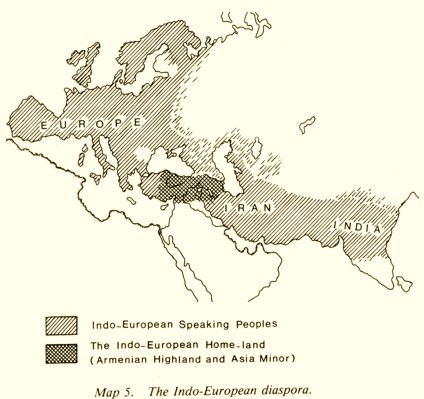
DIFFUSION FROM THE ORIGINAL HOMELAND
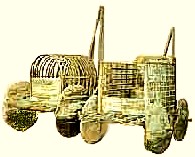
THE INVENTION OF THE WHEEL BY THE AR-MEN
AND THE DOMESTICATION OF THE HORSE
MADE POSSIBLE THE RAPID SPREAD OF MOUNTED INDO-EUROPEANS
FROM ARMENIA TO OTHER PARTS OF THE ANCIENT WORLD.
OLDEST SURVIVING WAGONS IN THE WORLD FROM LCHASHEN 1800 BC!
THE NEARBY GEGHAMA MOUNTAIN CAVES CONTAIN THE OLDEST PICTOGRAPHS
DEPICTING PULLING WAGONS. ATTESTING TO THE FACT THAT THE AREA MUST
HAVE BEEN A CENTER OF ORIGIN FOR PRODUCING FOR THE TIME
REVOLUTIONARY WAGONS. ORGANIC WOOD HAS BEEN MIRACULOUSLY PRESERVED
DUE TO THE TAR OF ACCUMULATED DEBRIS THAT HAD
COMPLETELY COVERED THE CARTS.
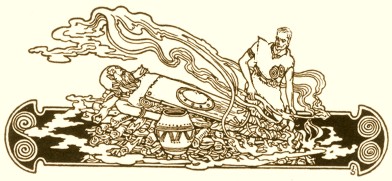
CREMATION RITUAL. PURIFICATION BY FIRE.

DECORATIVE BROOCH MADE OUT OF PURE GOLD. FIRST MILLENNIUM BC.
SACRED COSMIC ARMIN SYMBOLS INCLUDING 3 RIGHT AND LEFT SPINNING UNITED
∞
[INFINITY] PAROYR
SPIRALS [LIKE EYES/AYAS...]WITHIN A DOWNWARD POINT
TRAPEZOID [MOTHER EARTH/COSMIC WATERS SPIRIT DESCENDING INTO MATTER]
DIVIDED INTO THREE LAYERS [TRIPLE DECKER -- HEAVEN-EARTH-UNDERWORLD].
DIV. SEC AND PERIPHERY MARKED IN UNBROKEN CONTINUUM OF
∞
[LINKED RINGS].
THE SERPENT [KENSAUZH/LIFE FORCE] PASSES THROUGH THE MIDDLE/ALL..
NOTE DETAIL BELLOW SHOWING SIX RINGS LEADING TO THE SEVENTH...FIXED
POINT/CIRCLE...MAKING THE SACRED PATTERN OF 77 IN ONE
∞...ETERNITY...
ABOVE THE HORIZ. MERIDIAN NINE DIAMONDS EACH MADE OUT OF
S E V E N C L U
S T E R E D S P
H E R E S...
Over the past 200 years, linguists have reconstructed the vocabulary and syntax of the postulated Indo-European protolanguage with increasing confidence and insight. They have tried to unravel the paths by which the language broke into daughter languages that spread throughout Eurasia, seeking at the origin of those paths the homeland of the protolanguage itself. The early investigators placed the homeland in Europe and posited migratory paths by which the daughter languages evolved into clearly defined Eastern or Western branches. Our work indicates that the protolanguage originated more than 6,000 years ago in eastern Anatolia and that some daughter languages must have differentiated in the course of migrations that took them first to the East and later to the West.
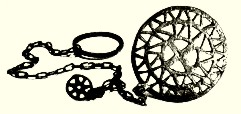
SOLAR AMULET OF PROTECTION
FOUND ON THE BURIED BODY OF AN ARMENIAN NOBLEMAN
LCHASHEN. SECOND MILLENNIUM BC.
The reconstruction of ancient languages may be likened to the method used by molecular biologists in their quest to understand the evolution of life. The biochemist identifies molecular elements that perform similar functions in widely divergent species to infer the characteristics of the primordial cell from which they are presumed to have descended. So does the linguist seek correspondences in grammar, syntax, vocabulary and vocalization among known languages in order to reconstruct their immediate forebears and ultimately the original tongue.
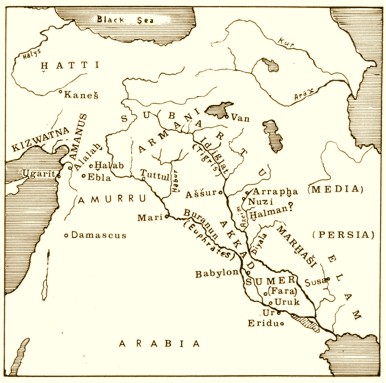
A R M A N I - S U B A R T U IN THIRD MILLENNIUM BC
T H E C R A D L E O F I N D O - E U R O P E
A N S
Living languages can be compared directly with one another; dead languages that have survived in written form can usually be vocalized by inference from internal linguistic evidence. Dead languages that have never been written, however, can be reconstructed only by comparing their descendants and by working backward according to the laws that govern phonological change. Phonology—the study of word sounds—is all-important to historical linguists because sounds are more stable over the centuries than are meanings.
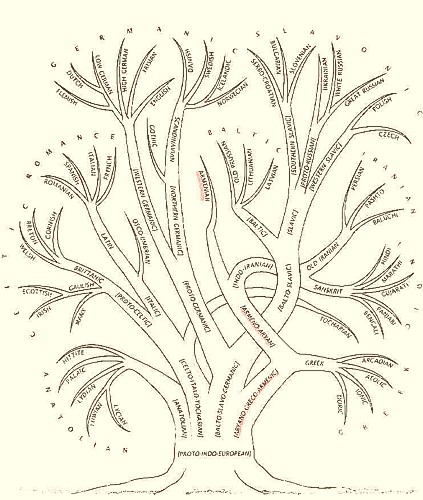
THE PROTO-INDO-EUROPEAN PROTO-ARMENIC ROOT LANGUAGE
PROTO-INDO-EUROPEAN IN ITS TURN EMERGED FROM
THE NOSTRATIC LANGUAGE OF THE ARMENIAN PLATEAU
Early studies of Indo-European languages focused on those most familiar to the original European researchers: the Italic, Celtic, Germanic, Baltic and Slavic families. Affinities between these and the "Aryan" languages spoken in faraway India were noticed by European travelers as early as the 16th century. That they might all share a common ancestor was first proposed in 1786 by Sir William Jones, an English jurist and student of Eastern cultures. He thus launched what came to be known as the Indo-European hypothesis, which served as the principal stimulus to the founders of historical linguistics in the 19th century.
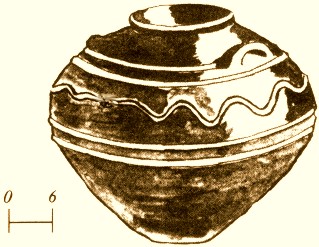
SACRED VESSEL DEPICTING
SERPENT BITING ITS TAIL. SECOND MILLENNIUM.